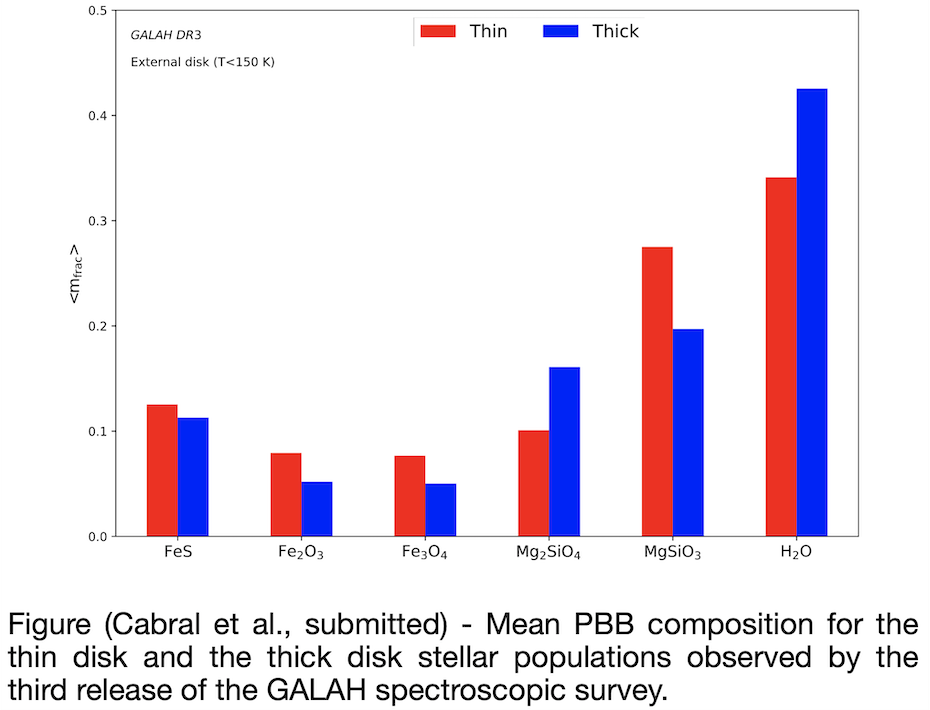How does the origin of stars in the Milky Way affects the composition of planet building blocks?
- 1CNRS Laboratoire de Géologie de Lyon, Univ. Claude Bernard Lyon 1, France e-mail (nahuel.cabral@univ-lyon1.fr)
- 2Max-Planck-Institut für Astronomie, Germany (bitsch@mpia.de)
- 3Laboratoire d’Astrophysique de Bordeaux, Université Bordeaux, Pessac, France (nadege.lagarde@u-bordeaux.fr)
Our Galaxy is composed of different stellar populations which are characterized by different chemical abundances. They are thought to imprint the composition of small bodies formed together with planets : planet building blocks (PBB), asteroids and interstellar objects.
We investigated the expected PBB composition in different Galactic regions using the ground-based spectroscopic surveys GALAH and APOGEE ; and the stoichiometric condensation model from Bitsch & Battistini (2020). This study has revealed the potential link between the PBB composition and the stellar populations across the Galaxy (Cabral et al, submitted).
Interestingly, the PBB compositions determined from large observational surveys reveal common trends determined previously with synthetic models. We confirm the PBB composition valley separating the thin disk stars from the thick disk stars (i.e. a bimodal distribution of compositions) already highlighted in our previous study (Cabral et al. 2019) using the Besançon stellar population synthesis model of the Milky Way.
Moreover, we find that metal-poor stars both in the thin and thick disks should host water-rich PBB. Given the importance of water abundance in planet formation simulations (Morbidelli et al. 2015, Ros et al. 2013, 2019), we discuss in a galactic context the potential impact for the early phases of planet formation.
Overall we find that the chemical abundances of host stars should impact the composition of exoplanets, as well as small body populations found around these stars. Our results imply that thick disk stars (which are rather alpha-rich, metal-poor stars) are suitable hosts for ice-rich small bodies (cf. Figure). Whether thick disk stars are suitable for water worlds or/and hycean planets (Madhusudhan et al. 2021) remains matter of debate.

How to cite: Cabral, N., Guilbert-Lepoutre, A., Bitsch, B., and Lagarde, N.: How does the origin of stars in the Milky Way affects the composition of planet building blocks?, Europlanet Science Congress 2022, Granada, Spain, 18–23 Sep 2022, EPSC2022-894, https://doi.org/10.5194/epsc2022-894, 2022.

